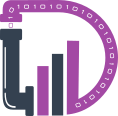Example: Suppose you own a retail store, and you want to
analyze your sales data for the last year. You can use
descriptive analytics to understand the total sales revenue,
the number of customers, the average purchase amount, and
the most popular products sold. This information will help
you make better business decisions and optimize your
operations.
Diagnostic Analytics?
Diagnostic analytics is used to identify the root cause of a
problem or an issue. It uses data to answer questions like
why something happened or what caused it to happen. It helps
in identifying the factors that led to a particular outcome.
Example: Suppose your retail store's sales have decreased
over the last quarter. You can use diagnostic analytics to
identify the reasons behind the decrease in sales. You can
analyze data to identify whether the decrease was due to a
decrease in the number of customers or a decrease in the
average purchase amount. Once you identify the cause, you
can take corrective actions to address the issue.
Predictive Analytics?
Predictive analytics is used to make predictions about the
future based on historical data. It answers questions like
"What is likely to happen?" and "When is it likely to
happen?". It uses statistical models and machine learning
algorithms to identify patterns and trends in the data and
predict future outcomes. It helps in identifying potential
opportunities and risks.
Example: Suppose you want to predict the sales revenue for
the next quarter. You can use predictive analytics to
analyze historical sales data and identify the factors that
impact sales. You can then use this information to create a
predictive model that can forecast sales for the next
quarter. This information can help you plan your inventory
and marketing strategy accordingly.
Prescriptive Analytics?
Prescriptive analytics is the most advanced type of
analytics. It involves using data to make recommendations
about what actions to take. Prescriptive analytics answers
questions like "What should we do?" and "What is the best
course of action?". It is focused on using data to make
decisions that will lead to better outcomes. It helps in
optimizing decision-making processes.
Example: Suppose you want to increase sales revenue for your
retail store. You can use prescriptive analytics to identify
the best course of action. You can analyze data to identify
the most profitable products and the customer segments with
the highest purchasing power. Based on this analysis, you
can create a recommendation engine that provides
personalized recommendations to customers, increasing the
likelihood of a purchase.
In conclusion, descriptive, diagnostic, predictive, and
prescriptive analytics are essential for making data-driven
decisions. Each type serves a different purpose and provides
different insights. Understanding these types of analytics
can help businesses optimize their operations, identify
opportunities and risks, and make better decisions.





